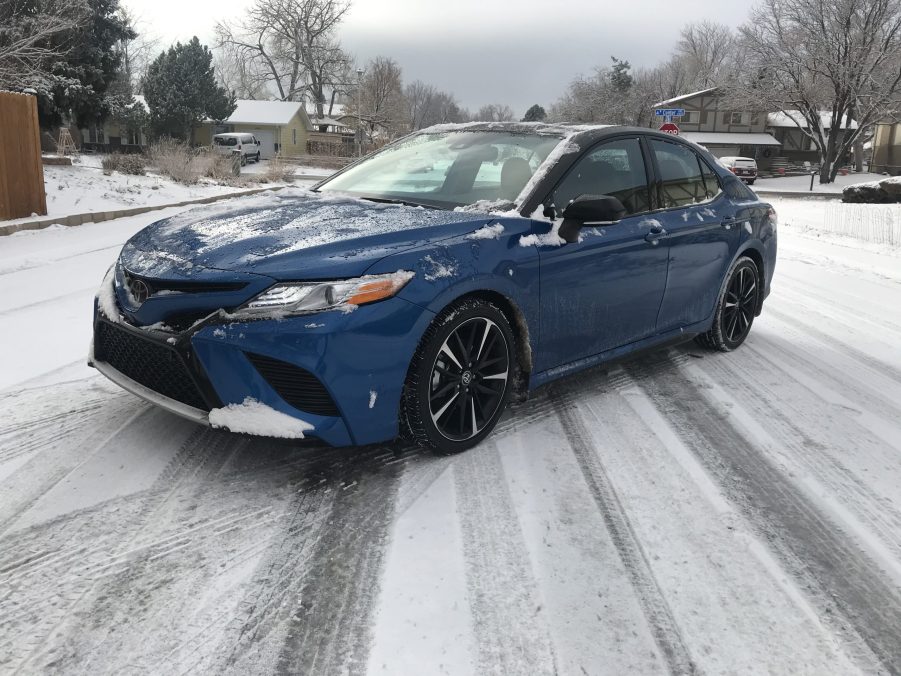
The 2021 Toyota Camry XSE Might be Slow, But It’s Great In the Snow
No one that buys a Toyota Camry really cares how slow or fast it is. After all, most consumers just need a safe and comfortable means of transportation that can achieve great gas mileage during long trips and the Camry does just that. But for those living in snow states, the notion of a sedan being able to trudge through the snow is an added plus, which I found to be the case when driving the Toyota Camry XSE for a week.
The Camry’s slowness makes sense in the snow
I recently complained about the 2021 Toyota Camry XSE feeling annoying slow upon acceleration thanks to its naturally aspirated 2.5-liter, four-cylinder engine under the hood. Even with 205 hp, I found that I needed to push the pedal to the floor even when accelerating up to 40 mph just to get the car going with some haste. However, when I was finally able to test the car after a brief Colorado snowfall, the Camry’s slowness made more sense.

If you have ever driven in snow, then you’ll know that slower acceleration, or “feathering” the accelerator, is typically needed when upon initial acceleration to ensure that the car gets the traction it needs to get going. In this case, having the powerful V6 engine that the Camry is available with would not be ideal. And as I found out, the weaker four-cylinder engine is actually perfect for traversing snowy roads, which is the first time that I was actually happy to have the slower version of a car.

The Camry’s all-wheel-drive system is really good
For the 2020 model year, Toyota added the option for all-wheel drive to the Camry lineup. And while most people in drier states will most likely forgo the extra cost of sending power to all four wheels, those of us in snow states will gladly shell out the extra cash for it. I found that the system works flawlessly and seamlessly as I made sure to test it on freshly covered snowy streets in addition to streets that were just iced over.
To my surprise, the system activated the rear wheels without so much as a sound to let you know it was doing so, and the car accelerated just as it did on dry pavement. Toyota says that the all-wheel-drive system can send up to 50 percent of the power to the rear wheels when the front ones start to slip, and it definitely feels like it does. Unfortunately, I wasn’t able to test it in deeper snow to see if the car can get out of even hairier (or snowier) situations, but I know that it can at least get you to your destination safely when running errands in snowy weather.

Is the all-wheel-drive system worth it?
If you live in a snow state and are in the market for a Camry, then I would definitely recommend getting the all-wheel-drive version. It’s rare to see a competitor in this category with an option for all-wheel drive, so I feel like the Camry actually has a leg up on its competition. However, if you live in a dry state, then stick to the front-wheel-drive model and get a Camry with the 3.5-liter V6 under the hood. You’ll be glad you did.



